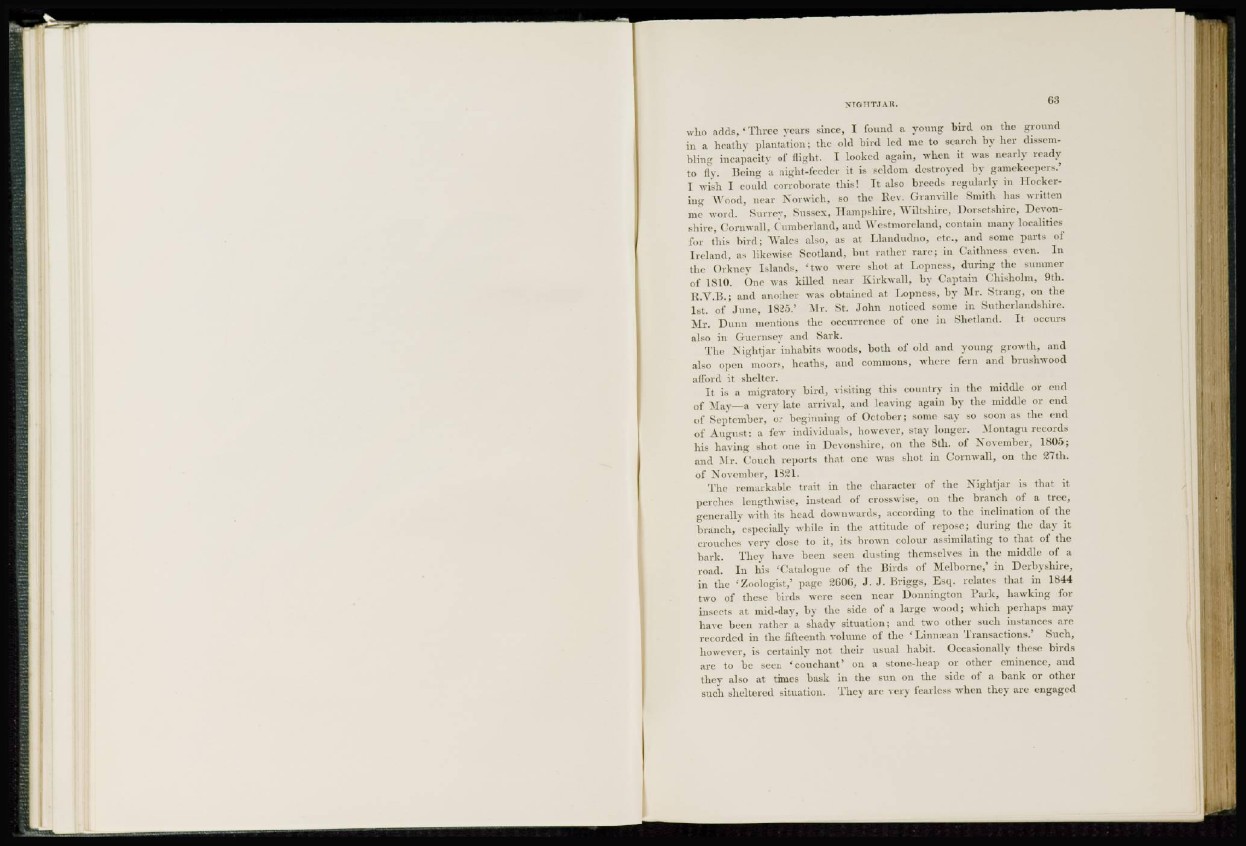
who adds,'Three years since, I found a young bird on the ground
in a heathy plantation; the old bird led me to search by her dissembling
incapacity of flight. I looked again, when it was nearly ready
to fly. Being a night-feeder it is seldom destroyed by gamekeepers.'
1 wish I could corroborate this! It also breeds regularly in Hockering
Wood, near Norwich, so the Rev. Granville Smith has written
mc word. Surrey, Sussex, Hampshire, Wiltshire, Dorsetshire, Devonshire,
Cornwall, Cumberland, and Westmoreland, contain many localities
for this bird; Wales also, as at Llandudno, etc., and some parts of
Ireland, as likewise Scotland, but rather rare; in Caithness even. In
the Orkney Islands. ' two were shot at Lopness, during the summer
of 1810. One was killed near Kirkwall, by Captain Chisholm, 9th.
R.V.B.; and another was obtained at Lopness, by Mr. Strang, on the
1st. of June, 1825.' Mr. St. John noticed some in Suthcrlandshire.
Mr. Dunn mentions the occurrence of one in Shetland. It occurs
also in Guernsey and Sark.
The Nightjar inhabits woods, both of old and young growth, and
also open moors, heaths, and commons, where fern and brushwood
afford it shelter.
It is a migratory bird, visiting this country in the middle or end
of May—a very late arrival, and leaving again by the middle or end
of September, or beginning of October; some say so soon as the end
of August: a few individuals, however, stay longer. Montagu records
his having shot one in Devonshire, on the 8th. of November, 1805;
and Mr. Couch reports that one was shot in Cornwall, on the 27th.
of November, 1821.
The remarkable trait in the character of the Nightjar is that it
perches lengthwise, instead of crosswise, on the branch of a tree,
generally with its head downwards, according to the inclination of the
branch, especially while in the attitude of repose; during the day it
crouches very close to it, its brown colour assimilating to that of the
bark. They have been seen dusting themselves in the middle of a
road. In his 'Catalogue of the Birds of Melborne,' in Derbyshire,
in the 'Zoologixt,' page 260(>, J. J. Briggs, Esq. relates that in 1844
two of these birds were seen near Donnington Bark, hawking for
insects at mid-day. by the side of a large wood; which perhaps may
have been rather a shady situation; and two other such instances are
recorded in the fifteenth volume of the 'Linmean Transactions.' Such,
however, is certainly not their usual habit. Occasionally these birds
are to be seen 'couchant* on a stone-heap or other eminence, and
they also at times bask in the sun on the side of a bank or other
such sheltered situation. The) are very fearless when they are engaged